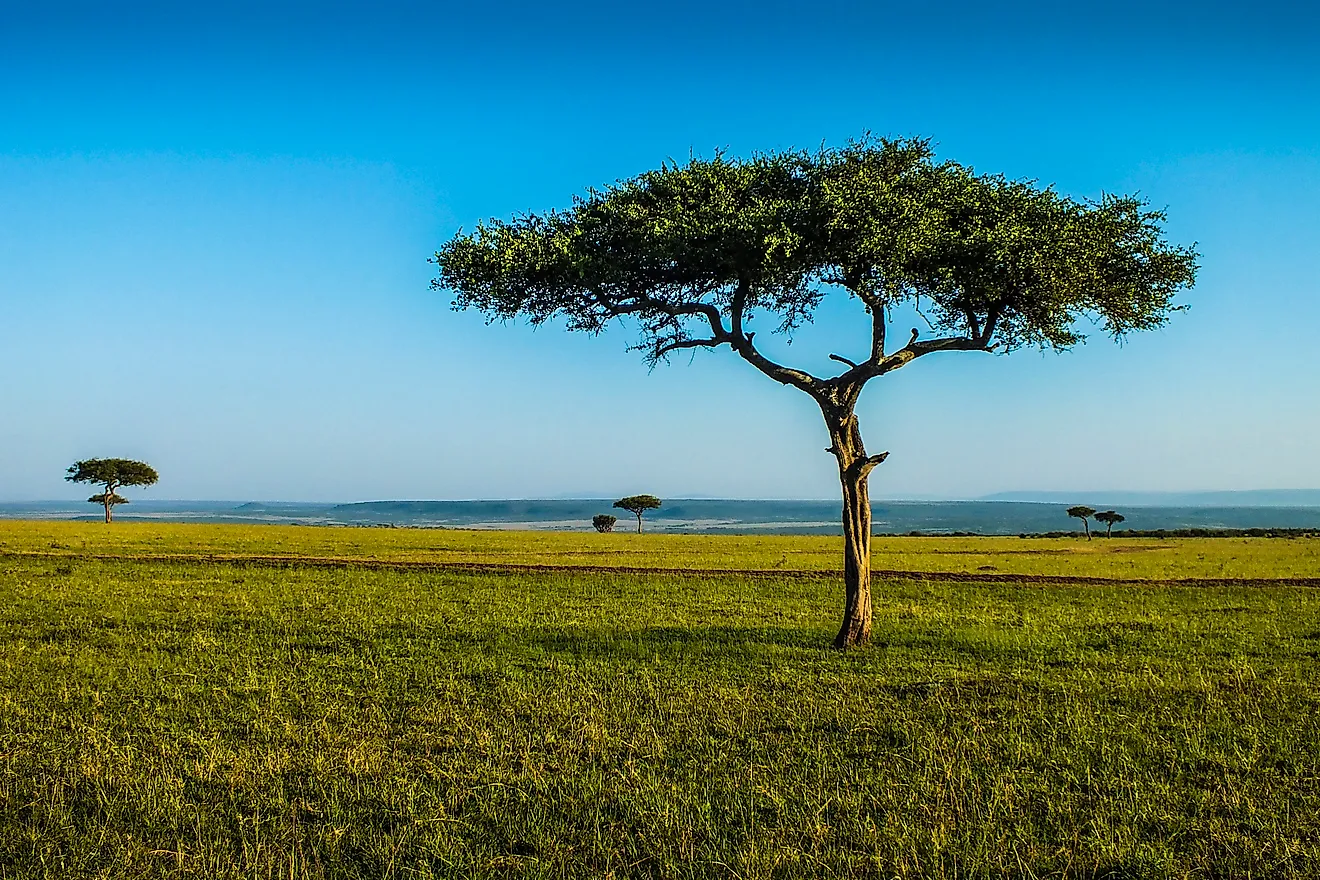Native Plants Of Sudan

Sudan is a country eastern in Africa with a rich variety of plants that number to more than 4000 species. The different climatic zones such as the savannah, rainforest and deserts, and semi-deserts support a wide variety of unique plant biodiversity. The drier north has relatively fewer plant species compared to wetter regions of the country. Human activities and low precipitation rates have been known in the recent years to threaten the existence of these native plant species.
Native Plants Of Sudan
Umbrella thorn acacia (Vachellia tortilis)
The umbrella thorn acacia is a large or medium-sized tree with a flat topped canopy that forms an umbrella. The tree has coiled pods, long straight thorns, small hooked thorns, small white aromatic flowers, and spring-like structures that support the seeds. The acacia grows mainly in the Sahel and savannah regions of Africa with a high tolerance for arid conditions alkalinity and frost (in young plants). The umbrella thorn acacia occurs as a shrub in extremely arid conditions. The tree is exploited for its wood that is used mainly for furniture.
Veld fan (Boophone disticha)
The veld fern is endemic to Africa, growing in tropical and sub-tropical areas. The fan can withstand arid conditions, sandy soils, and rocky areas but is destroyed by frost. The poisonous bulb plant has fan-like structures with part of its bulb exposed on the ground. The bulb has dry scales. The leaves are greyish-green and are arranged to form a fan-like structure. Flowering in the plant occurs during spring with the production of red or pink highly –scented flowers that develop into a large seed head and are dispersed. The plant has been exploited for arrow poison and as a treatment for various illnesses.
Athel tamarisk (Tamarix aphylla)
The tamarisk is a medium to tall evergreen tree native to north, central, and east Africa along saline soils. The tree has thin branches with bluish-purple bark. The leaves occur in alternate arrangement and are mostly covered by a layer of salt secretion that crystallizes on the leaves. The tamarisk has pink or white flowers that produce wind dispersed seeds. The plant is resistant to fire and spreads fast through adventitious roots, vegetative or through submerged stems. The tree is used as a windbreaker in agriculture and as a fire barrier.
Arabica coffee (Coffea arabica)
Arabica coffee is a native beverage plant from Ethiopia and the Boma Plateau of Sudan. Due to the cultivation of Arabica coffee, its distribution and occurrence in the wild have shrunk significantly making it a rare species. Itsleaves are simple and green. Flowers occur in auxiliary clusters in white or pinkish color.
Conservation of plants in Sudan
Human activity such as overgrazing and
agriculture are the main threats to plants in Sudan coupled with the rapid
climate change and desertification. A few efforts to conserve the biodiversity
of Sudan have been made both by the local government and some non-governmental
organizations. These efforts are however challenged by constant civil unrests
and lack of support from local communities and government. Plant species also
native to Sudan include the African tulip tree, cornstalk dracaena, monk
orchid, African redwood, red ironwood and Nile grass.
Native Plants Of Sudan
| Native Plants of Sudan | Scientific Name |
|---|---|
| Umbrella Thorn Acacia | Vachellia tortilis |
| Veld Fan | Boophone disticha |
| Athel Tamarisk | Tamarix aphylla |
| Arabica Coffee | Coffea arabica |
| African Tulip Tree | Spathodea campanulata |
| Cornstalk Dracaena | Dracaena fragrans |
| Monk Orchid | Oeceoclades maculata |
| African Redwood | Hagenia abyssinica |
| Red Ironwood | Lophira alata |
| Nile Grass | Acroceras macrum |











